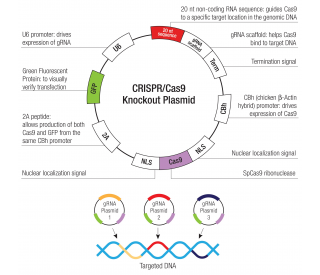Purity
>95%, by SDS-PAGE under reducing conditions and visualized by silver stain
Endotoxin Level
<0.10 EU per 1 μg of the protein by the LAL method.
Activity
Measured by its binding ability in a functional ELISA.
When rhHGF (Catalog # 294-HGN) is immobilized at 5 µg/mL, the concentration of rhCLEC3B that produces 50% of the optimal binding response is found to be approximately 1‑5 μg/mL.
Source
Mouse myeloma cell line, NS0-derived Glu22-Val202, with a C-terminal 6-His tag
Accession #
N-terminal Sequence
AnalysisGlu22
Predicted Molecular Mass
21.0 kDa (monomer)
SDS-PAGE
25 kDa, reducing conditions
5170-CL |
| |
Formulation Lyophilized from a 0.2 μm filtered solution in PBS. | ||
Reconstitution Reconstitute at 100 μg/mL in PBS. | ||
Shipping The product is shipped at ambient temperature. Upon receipt, store it immediately at the temperature recommended below. | ||
Stability & Storage: Use a manual defrost freezer and avoid repeated freeze-thaw cycles.
|
Background: CLEC3B/Tetranectin
CLEC3B (C‑type lectin domain family 3 member B), also known as Tetranectin, is a 17 kDa O‑glycosylated member of the C‑type lectin superfamily (1, 2). Mature human CLEC3B consists of an alpha -helical coiled-coil region followed by one C‑type lectin domain (CTLD) (3, 4). It shares 81% amino acid sequence identity with mouse and rat CLEC3B. CLEC3B associates into non‑covalent homotrimers, although it was named Tetranectin based on the proposal that it formed tetramers (4, 5). CLEC3B is secreted by endocrine, epithelial, endothelial, and mesenchymal cells including several hematopoietic cell types (6, 7). It shows binding selectivity for heparan sulfate, fucoidan, and chondroitin sulfates A, B, and C (8). CLEC3B binds the Kringle domain-containing proteins Plasminogen, tPA, and HGF, and it enhances the tPA-mediated activation of Plasminogen (5, 9). It also reduces the ability of Angiostatin (a Plasminogen fragment) to inhibit vascular endothelial cell proliferation (10). In mouse, CLEC3B is involved in the development and repair of muscle, spine, and skin (11 - 13). CLEC3B is upregulated in stromal cells surrounding various tumors but not in the tumor cells themselves (3, 14 ‑ 16). It is concentrated in the extracellular matrix at the leading edge of malignant tumors, a pattern that overlaps that of Plasminogen (3, 14, 16).
References:
Zelensky, A.N. and J.E. Gready (2005) FEBS J. 272:6179.
Jaquinod, M. et al. (1999) Biol. Chem. 380:1307.
Wewer, U.M. and R. Albrechtsen (1992) Lab. Invest. 67:253.
Nielsen, B.B. et al. (1997) FEBS Lett. 412:388.
Clemmensen, I. et al. (1986) Eur. J. Biochem. 156:327.
Christensen, L. and I. Clemmensen (1989) Histochemistry 92:29.
Christensen, L. et al. (1987) Histochemistry 87:195.
Clemmensen, I. (1989) Scand. J. Lab. Invest. 49:719.
Westergaard, U.B. et al. (2003) Eur. J. Biochem. 270:1850.
Mogues, T. et al. (2004) J. Biomed. Biotechnol. 2:73.
Wewer, U. M. et al. (1998) Dev. Biol. 200:247.
Iba, K. et al. (2001) Mol. Cell. Biol. 21:7817.
Iba, K. et al. (2009) Wound Repair Regen. 17:108.
Obrist, P. et al. (2004) J. Clin. Pathol. 57:417.
Brunner, A. et al. (2007) Virchows Arch. 450:659.
De Vries, T.J. et al. (1996) J. Pathol. 179:260.
Long Name:
C-type Lectin-like Receptor 3B
Entrez Gene IDs:
7123 (Human); 21922 (Mouse)
Alternate Names:
CLEC3B; C-type lectin domain family 3 member B; C-type lectin domain family 3, member B; DKFZp686H17246; Plasminogen kringle 4-binding protein; TETN; tetranectin (plasminogen binding protein); Tetranectin; TNA; TNAtetranectin (plasminogen-binding protein); TNtetranectin










